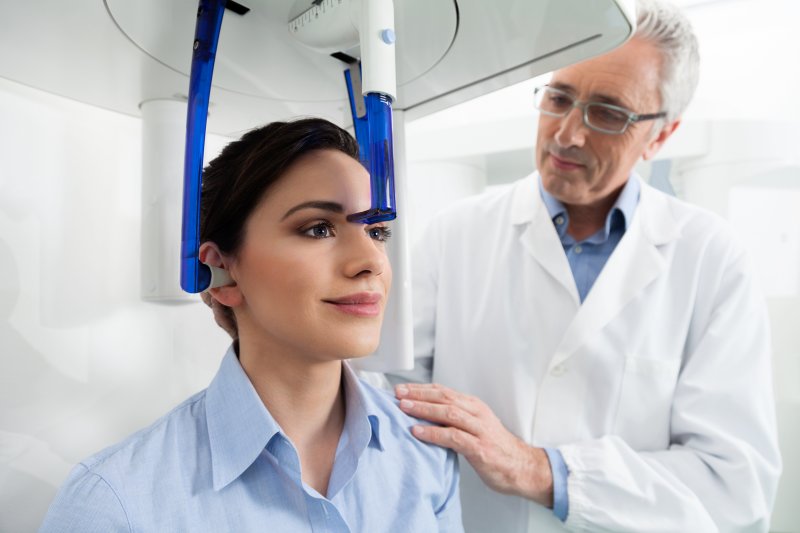
You wouldn’t buy a house if you discovered that the support weights were estimated, or a car if the engine was put together by an eight-year-old (no matter how talented they may be.) So why entrust the future of your teeth to anything less than the best?
Dental implants are one of the biggest investments you can make in your dental care journey. Because of this, you’ll want to ensure that everything about your treatment is as accurate as possible.
Continue reading to learn more about cone beam scanners, and how they can help with your dental treatment.
What Is a Cone Beam Scanner?
Cone Beam Computed Tomography (CBCT) scanners are advanced X-ray technology. They serve as diagnostic imaging tools for detecting problems in the jawbones and adjacent structures.
This specialized CBCT scanner generates 3D images encompassing dental structures, soft tissues, nerve pathways, and craniofacial bone in a single scan, giving your dentist a very accurate picture of your whole head!
During a CBCT scan, a cone-shaped X-ray beam is rotated around you, producing a comprehensive series of highly accurate images that are merged to form a 3D image.
Why Is it Important to My Treatment?
CBCT scans offer the precision in anatomy required for diagnosing, planning treatments, conducting surgeries, and conducting post-implant follow-ups.
Traditional two-dimensional imaging methods like panoramic and intraoral images don’t provide the same amount of information essential for effective implant treatment planning.
For dental implants, accuracy is everything. The depth, width, and height of your implant can change everything about how it looks and feels in your mouth. Not all dentists who perform implants have a CBCT scanner, but those who do tend to perform the treatment with fewer complications.
How Do Dentists Use Cone Beam Scans?
After the completion of your CBCT scan, your dentist looks over the images. The scans serve as a tool for pinpointing the best placement of dental implants.
With it, your dentist finds the strongest available bone while avoiding adjacent structures. The scan guides decisions regarding implant depth and angulation, ensuring precise positioning.
Your dentist then uses a special guide to place the implant into your jawbone and prepare it for the final prosthetic. This process is made much easier with this cutting-edge technology.
CBCT scans offer a reliable and accurate picture of the totality of your dental health. These machines provide your dentist with the best information possible to create guides and plans for restoring your smile and ensuring your long-term oral well-being.
About the Author
Dr. Evan Pedersen is a distinguished dental professional who embarked on his journey in dentistry at the renowned Harvard School of Dental Medicine in Boston, Massachusetts, where he earned his dental degree. Since then, Dr. Pedersen has made a fulfilling and dedicated career with a commitment to excellence and a passion for delivering top-tier dental care. To schedule a dental implant consultation at ORIS Dental Studio, call (512) 777-0866 or visit the website to learn more.
